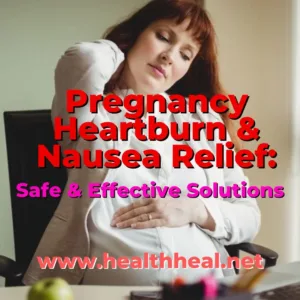Urinary calculi (stones) are common urological conditions that can cause significant discomfort and complications if left untreated. These stones form in different parts of the urinary tract and vary in their composition, size, and severity. In this blog, we will explore the types, symptoms, diagnosis, and treatment of urinary calculi.
1. Kidney Stones
Types:
- Calcium Stones: The most common type, typically composed of calcium oxalate or calcium phosphate.
- Struvite Stones: Often associated with urinary tract infections, these stones can grow quickly and become large.
- Uric Acid Stones: More common in people with a high-protein diet, gout, or dehydration.
- Cystine Stones: Rare and often hereditary, these stones are caused by a genetic disorder that leads to excessive cystine in the urine.
Symptoms:
- Severe pain in the back, side, or lower abdomen (often referred to as renal colic).
- Blood in the urine (hematuria).
- Nausea and vomiting.
- Frequent urination and a persistent urge to urinate.
- Pain during urination.
2. Ureter Stones
Types:
Ureter stones are typically kidney stones that have moved into the ureter, and they share the same composition types as kidney stones (calcium, uric acid, etc.).
Symptoms:
- Intense, sharp pain in the lower abdomen, back, or groin.
- Blood in the urine.
- Urgency to urinate.
- Pain or burning during urination.
- Nausea and vomiting.
3. Bladder Stones
Types:
Bladder stones are primarily caused by the crystallization of minerals in concentrated urine and may be composed of calcium oxalate, uric acid, or other substances.
Symptoms:
- Lower abdominal pain.
- Painful or difficult urination.
- Blood in the urine.
- Frequent urination, especially at night.
- Cloudy or dark-colored urine.
Diagnosis of Urinary Calculi
1. Kidney Stones
A. Medical History and Physical Examination
- Medical History: The healthcare provider will begin by asking about symptoms, particularly the nature, location, and intensity of pain, which is often sharp and radiates from the back to the abdomen. A history of previous kidney stones, urinary tract infections, dietary habits, and fluid intake will also be assessed.
- Physical Examination: A physical examination may reveal tenderness in the lower back (flank) area, where the kidneys are located. The presence of blood in the urine (hematuria) may also be observed.
B. Imaging Tests
- Ultrasound: Ultrasound is often the first imaging test used to diagnose kidney stones. It is non-invasive and does not involve radiation, making it suitable for patients who need to avoid exposure, such as pregnant women. Ultrasound can detect stones in the kidney and upper ureter but may miss smaller stones or those located in the mid or lower ureter.
- Non-Contrast CT Scan (Computed Tomography): A non-contrast spiral CT scan is the gold standard for diagnosing kidney stones. This test provides detailed images of the urinary tract, allowing for precise identification of the stone’s size, location, and potential impact on surrounding tissues. CT scans are highly sensitive and can detect even small stones.
- X-ray (KUB – Kidney, Ureter, and Bladder): A KUB X-ray is a simple, quick imaging test that can detect radiopaque stones (those visible on X-rays). It is often used in conjunction with other imaging methods to track the movement of a stone or monitor stone recurrence.
- Intravenous Pyelogram (IVP): IVP is a special X-ray test where a contrast dye is injected into a vein. The dye travels through the kidneys, ureters, and bladder, highlighting the urinary tract on X-rays. IVP can help detect stones, blockages, or abnormalities but is less commonly used today due to the availability of CT scans.
C. Laboratory Tests
- Urinalysis: A urine sample is analyzed to check for the presence of blood, infection, crystals, or other abnormalities that may indicate stone formation. The pH of the urine can also provide clues about the type of stone.
- Blood Tests: Blood tests help evaluate kidney function and measure levels of substances that can contribute to stone formation, such as calcium, uric acid, and electrolytes. Elevated levels may indicate a predisposition to certain types of stones.
- Stone Analysis: If a stone is passed naturally or removed surgically, it can be sent to a laboratory for analysis. Knowing the stone’s composition is essential for tailoring prevention strategies and treatment plans.
2.Ureter Stones
A. Medical History and Physical Examination
- Medical History: The doctor will take a detailed history of symptoms, focusing on the sudden onset of severe, sharp pain in the lower abdomen, back, or groin, often radiating toward the genitals. This pain is characteristic of ureter stones, which are kidney stones that have moved into the ureter. The patient’s history of kidney stones, infections, and lifestyle factors like diet and hydration will also be considered.
- Physical Examination: The examination may reveal tenderness in the abdomen or lower back, where the ureter is located. The doctor may also check for signs of hematuria or infection, which often accompany ureter stones.
B. Imaging Tests
- Non-Contrast CT Scan: This is the most effective and commonly used imaging technique for diagnosing ureter stones. A CT scan can accurately locate the stone within the ureter, determine its size, and assess the degree of urinary tract obstruction. It is particularly useful for detecting small stones that might be missed by other imaging methods.
- Ultrasound: Ultrasound may be used, especially in patients for whom radiation exposure should be minimized, such as pregnant women. While ultrasound is less sensitive than CT, it can still detect larger stones and assess the kidneys for signs of swelling (hydronephrosis) caused by ureteral obstruction.
- X-ray (KUB): An X-ray may help visualize radiopaque stones in the ureter, although it is less sensitive than a CT scan. It can be useful for monitoring stone movement or evaluating known stones over time.
- Intravenous Pyelogram (IVP): IVP involves injecting contrast dye and taking a series of X-rays to track the dye as it moves through the urinary tract. It helps identify the stone’s exact location and any associated blockages. However, due to the availability of CT scans, IVP is used less frequently.
C. Laboratory Tests
- Urinalysis: A urinalysis can detect blood, signs of infection, or crystals in the urine, indicating the presence of a ureter stone. The urine pH may also suggest the type of stone, helping to guide further treatment.
- Blood Tests: Blood tests assess kidney function and measure levels of stone-forming substances, such as calcium and uric acid. These tests also help identify any complications, such as infection or impaired kidney function.
- Stone Analysis: Stones that are passed or removed are analyzed to determine their composition, which is crucial for preventing future stones and guiding dietary or medical interventions.
D. Additional Diagnostic Procedures
- Ureteroscopy: In cases where imaging results are inconclusive or if a stone is suspected but not visible on other tests, a ureteroscopy may be performed. This procedure involves inserting a thin, flexible tube with a camera through the urethra and bladder to directly visualize the ureter and the stone. It can also be used to treat the stone by breaking it up or removing it.
3. Bladder Stones
A. Medical History and Physical Examination
- Medical History: The doctor will ask about symptoms such as frequent urination, painful urination, lower abdominal pain, and blood in the urine. Bladder stones often develop due to urinary retention, infections, or underlying bladder conditions, so the doctor will also inquire about any history of prostate issues, bladder dysfunction, or previous urinary tract infections.
- Physical Examination: A physical examination may reveal tenderness in the lower abdomen. The doctor may also perform a digital rectal exam (in men) to assess the prostate or a pelvic exam (in women) to check for any abnormalities that could contribute to urinary bladder calculi formation.
B. Imaging Tests
- Ultrasound: Ultrasound is a commonly used imaging test for diagnosing bladder stones. It is non-invasive and effective in visualizing stones within the bladder. Ultrasound can also assess the bladder’s structure and detect any underlying conditions, such as bladder wall thickening or tumors.
- X-ray (KUB): An X-ray can detect radiopaque bladder stones, especially if they are large. However, it may miss smaller or radiolucent stones (such as uric acid stones). X-rays are often used in combination with other imaging techniques.
- CT Scan: A CT scan provides detailed images of the bladder and can detect both small and large stones, as well as other potential causes of symptoms, such as tumors or structural abnormalities. It is particularly useful if the diagnosis is unclear or if other imaging tests are inconclusive.
- Cystoscopy: This procedure involves inserting a cystoscope (a thin, flexible tube with a camera) through the urethra to visually examine the bladder. Cystoscopy allows direct visualization of bladder stones and the ability to assess the bladder’s lining for any other abnormalities. It can also be used to remove or break up stones during the same procedure.
C. Laboratory Tests
- Urinalysis: A urine sample is analyzed for blood, signs of infection, or crystals. These findings can help confirm the presence of bladder stones and identify any associated urinary tract infection.
- Blood Tests: Blood tests may be used to evaluate kidney function and rule out infections. Elevated levels of substances like calcium or uric acid may suggest a predisposition to stone formation.
D. Additional Diagnostic Procedures
- Post-Void Residual Measurement: This test measures the amount of urine left in the bladder after urination. A high post-void residual volume may indicate incomplete bladder emptying, which can lead to stone formation.
- Stone Analysis: If a stone is removed, it can be sent to a laboratory for analysis to determine its composition. This information is crucial for preventing future stones and managing underlying conditions that contribute to stone formation.
Treatment of Urinary Calculi
The treatment of urinary calculi (stones) depends on the stone’s size, type, location, and the severity of symptoms. Each type of stone requires specific treatment strategies to manage pain, remove or dissolve the stones, and prevent recurrence.
1. Kidney Stones
A. Conservative Management
- Hydration: Increasing fluid intake is the first line of treatment for small kidney stones. Drinking plenty of water helps flush the urinary system, promoting the natural passage of the stone. The goal is to produce at least 2 to 2.5 liters of urine daily.
- Pain Management: Pain relief is essential, as kidney stones can cause severe discomfort. Over-the-counter pain relievers like ibuprofen or acetaminophen are commonly used. In cases of intense pain, stronger prescription painkillers may be necessary.
- Medications: Alpha-blockers such as tamsulosin are often prescribed to relax the muscles in the ureter, making it easier for the stone to pass. Medications like potassium citrate may also be used to help dissolve certain types of stones, such as uric acid stones.
B. Minimally Invasive Procedures
- Extracorporeal Shock Wave Lithotripsy (ESWL): ESWL is a non-invasive procedure that uses shock waves to break the kidney stone into smaller pieces, which can then be passed in the urine. This is often used for stones that are too large to pass naturally but are not large enough to require surgery.
- Ureteroscopy: A ureteroscopy involves inserting a thin, flexible tube with a camera through the urethra and bladder into the ureter and kidney. The stone can be directly visualized and either removed with a small basket or broken up using a laser (laser lithotripsy). This method is effective for stones in the kidney or upper ureter.
C. Surgical Options
- Percutaneous Nephrolithotomy (PCNL): PCNL is a surgical procedure used for large or complex kidney stones that cannot be treated with ESWL or ureteroscopy. A small incision is made in the back, and a nephroscope is inserted directly into the kidney to remove or break up the stone. This procedure is highly effective for large stones or those causing significant obstruction.
- Open Surgery: Open surgery is rarely needed today but may be required for very large or complex stones or when other treatments have failed. It involves making an incision in the side to access and remove the stone directly.
D. Preventive Measures
- Dietary Modifications: Dietary changes are essential for preventing future kidney stones. Depending on the stone type, patients may be advised to reduce sodium, animal protein, and oxalate-rich foods (like spinach and nuts). Increasing dietary calcium intake, as opposed to taking supplements, may also help prevent calcium stones.
- Medications: Long-term medications may be prescribed to prevent stone recurrence, such as thiazide diuretics for calcium stones, allopurinol for uric acid stones, or potassium citrate to alkalize the urine.
- Regular Monitoring: Regular follow-up with imaging studies and urine tests is important to monitor for new stone formation and assess the effectiveness of preventive measures.
2. Ureter Stones
A. Conservative Management
- Hydration and Pain Management: For small ureter stones (less than 5 mm), conservative treatment may be sufficient. Increased fluid intake and pain relievers, such as nonsteroidal anti-inflammatory drugs (NSAIDs), are typically recommended.
- Medications: Alpha-blockers like tamsulosin may be prescribed to help relax the ureter, allowing the stone to pass more easily. This approach, known as medical expulsive therapy (MET), is often used for stones between 5 mm and 10 mm.
B. Minimally Invasive Procedures
- Ureteroscopy with Laser Lithotripsy: If the stone is too large to pass on its own or if it causes significant symptoms like severe pain or obstruction, ureteroscopy with laser lithotripsy may be performed. This procedure involves inserting a ureteroscope through the urethra and bladder into the ureter to locate the stone. A laser is then used to break the stone into smaller pieces that can be removed or passed naturally.
- Extracorporeal Shock Wave Lithotripsy (ESWL): ESWL may also be used for ureter stones, especially those located in the upper ureter. The shock waves are focused on the stone from outside the body, breaking it into fragments small enough to pass in the urine.
- Stent Placement: In cases of severe ureteral obstruction, a temporary ureteral stent may be placed. This thin tube helps drain urine from the kidney to the bladder, bypassing the stone and relieving symptoms while definitive treatment is planned.
C. Surgical Options
- Percutaneous Nephrolithotomy (PCNL): While PCNL is more commonly used for kidney stones, it can be used for large or complicated ureter stones that cannot be treated with less invasive methods. A small incision is made in the back, and instruments are inserted directly into the ureter to remove the stone.
- Open Surgery: Like with kidney stones, open surgery is rarely needed but may be considered in very complex cases where other treatments have failed.
D. Preventive Measures
- Diet and Lifestyle Changes: As with kidney stones, dietary modifications play a key role in preventing ureter stones. Patients are often advised to drink plenty of water, limit sodium and animal protein intake, and avoid foods high in oxalates if they have calcium oxalate stones.
- Medications: Depending on the stone type and risk factors, medications may be prescribed to reduce the likelihood of stone formation. This may include potassium citrate, thiazide diuretics, or allopurinol.
- Regular Monitoring: Patients with a history of ureter stones should undergo regular monitoring with imaging and laboratory tests to detect and manage recurrent stones early.
3. Bladder Stones
A. Conservative Management
- Hydration: Small urinary bladder calculi may pass on their own with increased fluid intake. Drinking plenty of water helps to flush the bladder and prevent stones from forming or growing larger.
- Pain Management: Pain relievers may be prescribed to manage discomfort associated with bladder stones. Over-the-counter options like ibuprofen or acetaminophen are often sufficient.
B. Minimally Invasive Procedures
- Cystolitholapaxy: Cystolitholapaxy is the most common procedure used to treat calculi in urinary bladder. It involves inserting a cystoscope through the urethra into the bladder. A special instrument is then used to break up the stone into smaller pieces that can be washed out or passed in the urine. This procedure is usually performed under local or general anesthesia, depending on the size of the stone and the patient’s comfort level.
- Percutaneous Suprapubic Cystolithotomy: In cases where cystolitholapaxy is not feasible, especially for very large stones, a small incision is made in the lower abdomen (just above the pubic bone), and the stone is removed directly from the bladder. This approach is less invasive than open surgery and is typically reserved for larger stones.
C. Surgical Options
- Open Cystotomy: Open surgery may be necessary for extremely large bladder stones or when other treatment methods are not suitable. This procedure involves making a larger incision in the lower abdomen to access the bladder and remove the stone. Open cystotomy is usually considered when the stone is too large to be broken up using endoscopic methods or when multiple stones are present.
D. Treating Underlying Causes
- Bladder Emptying Issues: Many urinary bladder calculi form due to incomplete emptying of the bladder, often caused by an enlarged prostate, bladder diverticula, or neurogenic bladder. Treating the underlying condition, such as surgically reducing the size of the prostate or addressing neurological issues, is crucial to prevent recurrence.
- Infection Treatment: If bladder stones are associated with chronic urinary tract infections (UTIs), antibiotics may be prescribed to treat the infection and reduce the risk of stone formation.
E. Preventive Measures
- Diet and Fluid Intake: Patients are advised to maintain adequate hydration to dilute urine and reduce the risk of stone formation. Depending on the type of stone, dietary modifications may also be recommended, such as reducing foods high in oxalates, purines, or certain minerals.
- Bladder Function Monitoring: Regular monitoring of bladder function, especially in patients with underlying conditions like prostate enlargement or neurogenic bladder, is important to prevent stone recurrence.
- Follow-Up Care: Patients who have had bladder stones should have regular follow-up appointments with their healthcare provider to monitor for recurrence and assess the effectiveness of preventive measures.
Conclusion
Urinary calculi (stones) are painful and can lead to serious complications if not treated properly. Understanding the types, symptoms, diagnosis, and treatment options for each can help individuals seek timely medical care and avoid future occurrences. If you experience any symptoms of urinary calculi, consult a healthcare provider for appropriate evaluation and treatment.
This guide aims to provide a comprehensive overview of urinary calculi (stones), helping readers recognize symptoms and understand their treatment options.
Disclaimer
This information is intended as an educational guide only, and is here to help you as an additional source of information, along with a consultation from your urologist. The information does not apply to all patients.
Not all potential complications are listed, and you must talk to your urologist about the complications specific to your situation.
Faqs,
Can stress cause kidney stones?
Yes, stress can indirectly contribute to kidney stone formation by affecting hormone levels, hydration, and dietary habits, all of which can increase the risk of stones.
Do kidney stones cause urinary tract infections?
Yes, kidney stones can cause urinary tract infections (UTIs) by blocking the flow of urine, leading to bacterial growth and infection.
Can energy drinks cause kidney stones?
Yes, energy drinks can contribute to kidney stone formation due to their high caffeine and sugar content, which can lead to dehydration and increase the risk of stone development.
Does beer cause kidney stones?
Yes, beer can contribute to kidney stone formation due to its dehydrating effects and high purine content, which can increase the risk of certain types of stones.
How long can a kidney stone stay in the bladder?
A kidney stone can stay in the bladder for days to weeks, or even longer if it doesn't pass naturally, depending on its size and the individual's urinary tract function.




